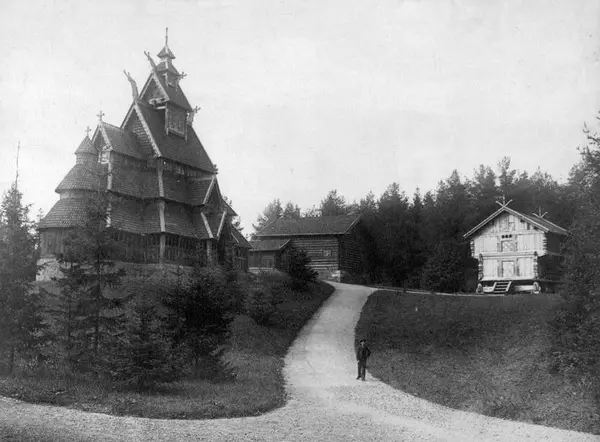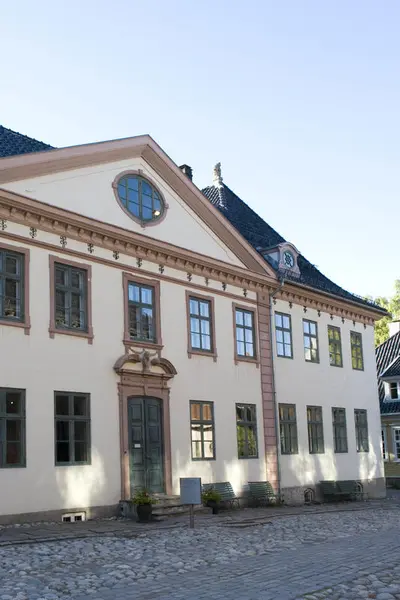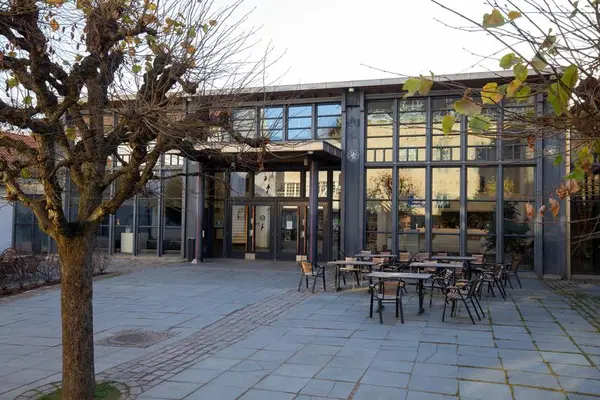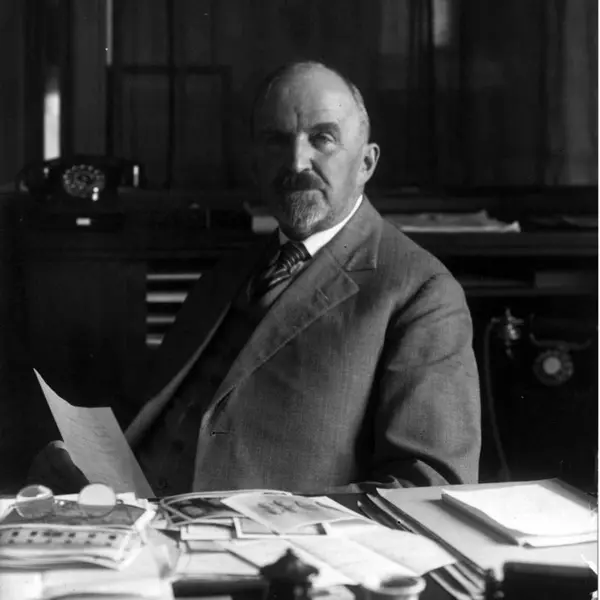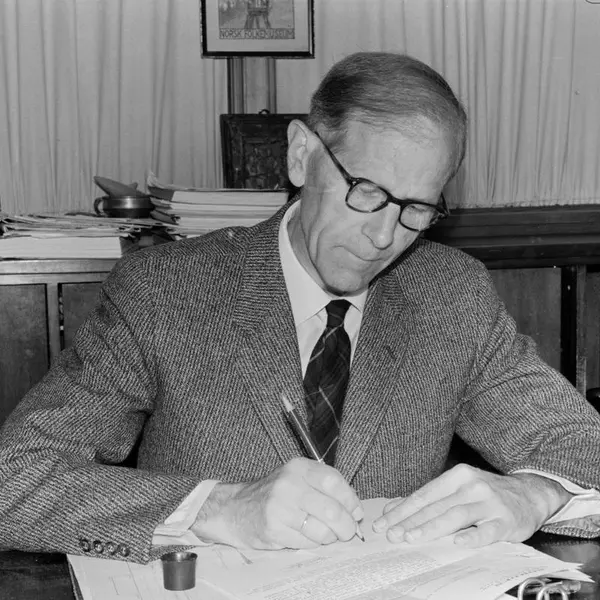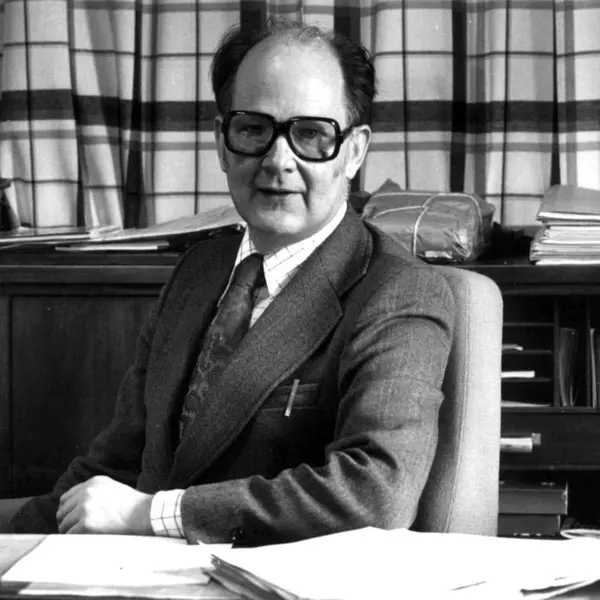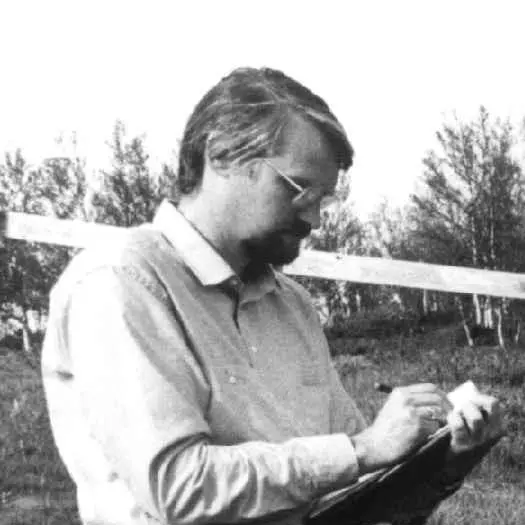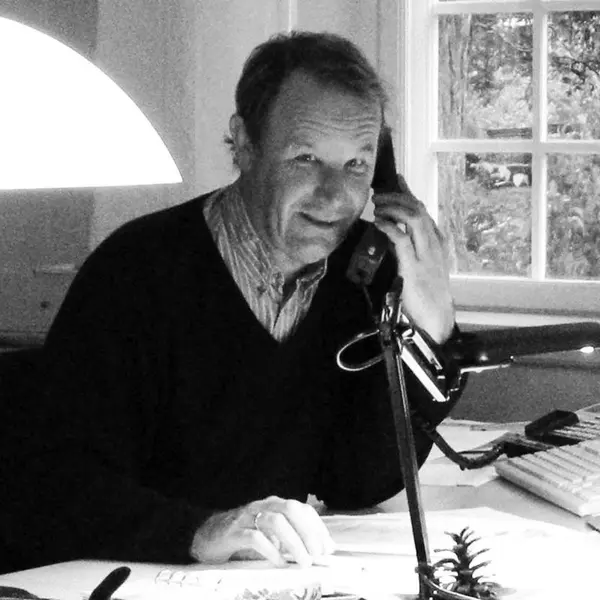- 1/1
Norsk Folkemuseum 1914. Drawing from Aftenposten.
The first 52 years
1894 -1946
The Norwegian Museum of Cultural History – Norsk Folkemuseum – was founded in 1894 by Hans Aall (1869-1946), who went on to be its Director for 52 years. The aim was to demonstrate “how our fathers lived and toiled, how they battled with the unforgiving land and harsh conditions, cultivated the soil, brought home their catch, traded, carried out their craft, lived and dressed, brought up their children; and how their spiritual life was affected by the changing times, what they thought and what they believed”. This was to provide “an understanding of our national life and our cultural development, and a feeling of togetherness and interdependence”.
After some years in central Kristiania, the museum was moved to Bygdøy in 1902. The Open Air Museum was established with the farmhouses from Valle in Setesdal, Grøslistua and Raulandsstua from Numedal, and a loft and a storehouse from Telemark.
- 1/1
Oscar IIs Collection, 1885. Axel Lindahl | Norsk Folkemuseum
In 1907, the museum took charge of the King Oscar II Collection – the world’s first open air museum, established in 1881 – which included the stave church from Gol and the farmhouses Hovestua from Heddal and Kjellebergstua from Valle in Setesdal.
The various collections of artefacts were at first displayed in temporary buildings, but in 1914 the Town Section was opened. This showcased furniture and household effects from urban Norwegian homes including those of senior officials, presenting the evolving interior design from the 1600s to around 1800. It also included original interiors from Arendal, Solør, Drammen and Christiania.
In 1903, the museum acquired a two-storey farmhouse known as a barfrøstue from Stor-Elvdal, as well as a summer cabin from Åmot. Both were erected in the space of two years. Farmhouses from Vang in Valdres, Heddal in Telemark and Flå in Hallingdal followed suit. In 1913, the Kjellebergstua was moved from the Oscar II Collection to the Setesdal farmstead. Farmhouses from Flesberg in Numedal and Stryn in Nordfjord were erected in 1914. November 1915 saw the presentation by the museum of a plan for a new section of the Open Air Museum – the Old Town. This section, containing the Barthe Town House from Kragerø and the Town House from Tollbugata 14 in Oslo, was opened to the public in 1930.
In 1938, new exhibition buildings designed by the architects Bjercke and Eliassen were completed, facing the market square. In 1935, the Church and Rural Arts Section was opened, and over the next few years exhibitions of industrial art and craft, agriculture, home crafts, vehicles - motorised and otherwise - musical instruments and toys were opened.
- 1/1
Norsk Folkemuseum
In 1941, Hans Aall launched the so-called “15 farmsteads plan”. In addition to the dwelling houses, the Open Air Museum was to show complete farmsteads, including many different types of outhouse. In total six farmsteads, from Setesdal, Østerdalen, Numedal, Hallingdal, Telemark and Hardanger, were brought together.
The next 43 years
1946 – 1989
Hans Aall died in 1946, and Reidar Kjellberg (1904-1977) took over as Museum Director. Kjellberg, an art historian, had been working at the museum since 1934, and had for several years been the museum’s Assistant Director. Kjellberg was a visionary, innovative and forward-looking man, who immediately put all his force and energy into the job of Director.
Initiatives to delight and involve the public were launched, such as folk dance performances, sheep shearing and bicycle parades. Co-operation with schools was extended. Last but not least, Reidar Kjellberg strove to turn the museum into a research institution, and to develop its archives and the collection of artefacts.
As a part of the celebration of Oslo’s 900th anniversary in 1950, the museum unveiled the exhibition “Daily life in Oslo from the Reformation to the Present”. The entire Town Section was emptied and totally rebuilt. The aim of the exhibition was to “give an impression of the city’s cultural history from the 1500s to 1950” – and it included furnished rooms from different periods and social strata, concluding with a completely modern living room .
The Sámi collections were transferred from the Ethnographic Museum to Norsk Folkemuseum in 1951, and a permanent exhibition of Sámi culture was opened in 1958.
During the 1960s, the Old Town was extended with five small houses from the suburb of Enerhaugen. The town house Chrystiegården from Brevik, which had been transferred to the museum in 1916, was opened to the public in 1971, and the grocery shop from Oslo opened in 1975.
-
Town House from Kirkegata 15 Anne-Lise Reinsfelt | Norsk Folkemuseum
The historian Halvard Bjørkvik (b. 1924) became the new Museum Director in 1975. During his tenure, approximately 7500 artefacts – a large part of the “Norwegian Collection” from the Nordic Museum in Stockholm – were transferred to Norsk Folkemuseum. These were artefacts collected in Norway at the end of the 19th century, and included Norwegian rose painting and wood carving, mangle boards, chests, cupboards, sleighs and harnesses, candlesticks and dishes. A selection of the artefacts was displayed in the exhibition “Culture Repatriated” (Kultur i retur), which opened in 1988 in a recently erected exhibition building called Vognremissen.
During the 1980s, several other buildings in the Open Air Museum were completed. These included the 1860s school house from Natås in Hordaland and the warehouse from Rødfyllgata 12 at Vaterland, which had housed a café for the unemployed in the 1930s. Now it was the turn of the museum craftsmen (including silversmiths and potters) to move in.
Work began on re-erecting the chapel Bethlehem from Hinna on Jæren (completed in 1992), and the rebuilding of the large, elegant town house Collettgården – once one of Christiania’s most exclusive residences – was finally completed.
-
The new Visiting Centre, opened in 1994. Haakon Harriss | Norsk Folkemuseum
The last 30 years
1989 - 2019
Between 1990 and 2000, the museum’s Director was Erik Rudeng (b. 1946). This was an eventful decade, when the museum concentrated much of its effort on temporary exhibitions, collections management and research.
Big thematic exhibitions were unveiled: “The Arcadian Dream” (1994), “Daily Life during WWII” (1995), “Nansen” (1996), “Germany and Scandinavia” (1998) and Sophie’s World (1999). Two new permanent exhibitions were also opened: “Norwegian Folk Art” (1993) and “Folk Dress” (1994).
A new central storage facility for the museum was built, the artefact and picture catalogues were digitised, and between 1995 and 2000, with support from the Research Council of Norway, the museum managed the large networked project “Man and the Living Environment”, in which several museums and university research institutes participated.
-
The Apartment Building from Wessels gate 15 in Oslo. Opening yearly 2001-2009- Anne-Lise Reinsfelt | Norsk Folkemuseum
Olav Aaraas (b. 1950) has been Director of the museum since 2001. Projects of the new millennium include: refurbishment of the museum restaurant, with the new name of Gjestestuene (2005); a new open air amenity with a large amphitheatre (2006); reconstruction of the home of Henrik Ibsen and a new permanent exhibition at the Ibsen Museum (2006); the fitting out of the “OBOS-tenement building – Wesselsgate 15” (completed in 2009); the renovation of the Trøndelag farmstead – “Trøndelag 1959” – (completed in 2011) and of Enerhaugen (2011-12).
During this period there were also several thematic exhibitions, including “Neighbours for a Thousand Years” (2004), “Norwegians and Swedes” and “Norway in Denmark” (2005), “Nothing Disappears” (2007), “Back to the ’80s” (2009), “The 1950s revisited” (2010), “Norway 1910 – in Colour” (2011), “Devoted Women” (2013), “1814 – a Norwegian Drama” (2014) and “Norway by Photographer Wilse” (2015).
From its establishment in 1894, Norsk Folkemuseum was owned by a members’ association, but in 1990 the museum became a wholly-owned foundation with a friends’ association.
Since 2016, the museum has been part of the Norsk Folkemuseum Foundation, which also includes the Bygdø Royal Manor (from 2004), Eidsvoll 1814 with Eidsvoll Manor House and Wergeland’s House (from 2009), and the Norwegian Maritime Museum (from 2015). In addition, the consolidated museum includes the Bogstad Manor in Sørkedalen, and the Ibsen Museum in Arbinsgate.
Since 2016, Olav Aaraas has been the Director of the Norsk Folkemuseum Foundation, and Inger Jensen (Chief Curator 2002-2015) the Director of Norsk Folkemuseum.
The Directors
- 1/7
Hans Aall, director 1904-1946 Ukjent fotograf | Norsk Folkemuseum - 2/7
Reidar Kjellberg, director 1947-1974 Unni Fürst | Norsk Folkemuseum - 3/7
Halvard Bjørkvik, director 1975-1989 Norsk Folkemuseum - 4/7
Jon Birger Østby, director 1989-1990 - 5/7
Erik Rudeng, director 1900-2000 Anne-Lise Reinsfelt | Norsk Folkemuseum - 6/7
Liv Hilde Boe, head curator 1991. director 2000 Norsk Folkemuseum - 7/7
Olav Aaraas, director 2001-, CEO of The Foundationen Norsk Folkemuseum 2016-2020 Norsk Folkemuseum
New director/CEO 2020
Nina Refseth is the new museum director.

